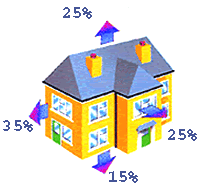One of the primary reasons that EIFS (Exterior Insulation Finish Systems) has been targeted by insurance companies and cities is because of “failures” it has experienced around window and door openings. The problem lies primarily with improperly installed caulking failing (i.e. the wrong type being used), an integral part of all projects that no one specific sub-trade seems to want to take responsibility for. The result of failed caulking was water intrusion, leading to mould growth – which is harmful to occupant health and can lead to further damage to the building structure. The failures that resulted were not worse than other sidings like hardie board, vinyl, T-111 – but because of the drastic increase in the use of EIFS in new construction and renovations and lack of proper installation procedures, certain projects have received widespread attention.
What can be done to help prevent this moisture entrapment issue? The best ways to ensure that new construction and renovation projects avoid trapping moisture is to ensure that the modern EIFS installation procedures from the manufacturer are followed – that is; proper drainage using vertically channeled adhesive and grooved insulation boards. On older installations, home owners should be checking their caulking every couple of years to ensure that cracks and delamination is not occurring. By ensuring that the caulking is sealed between two points, you are eliminating any chance of moisture getting in behind the EIFS and causing rot, mold or decaying situations.

Caulking will ideally need to be replaced roughly every 10 years. This seems to be the time period between the new installation of low-modulus sealant (caulking) and when it tends to crack or delaminate to the point where moisture has the opportunity to enter and cause problems. If the caulking reaches the end of it’s life before the 10 year mark, it should be removed and fresh caulking reinstalled in it’s place. While caulking is not specifically the role of the stucco trade, ensuring that it is in good condition will help prolong the life of your stucco cladding.
There aren’t an unlimited number of caulking colours, but you can usually find one to match your stucco wall colour closely. For additional information or help on your new construction or renovation project, contact us.



